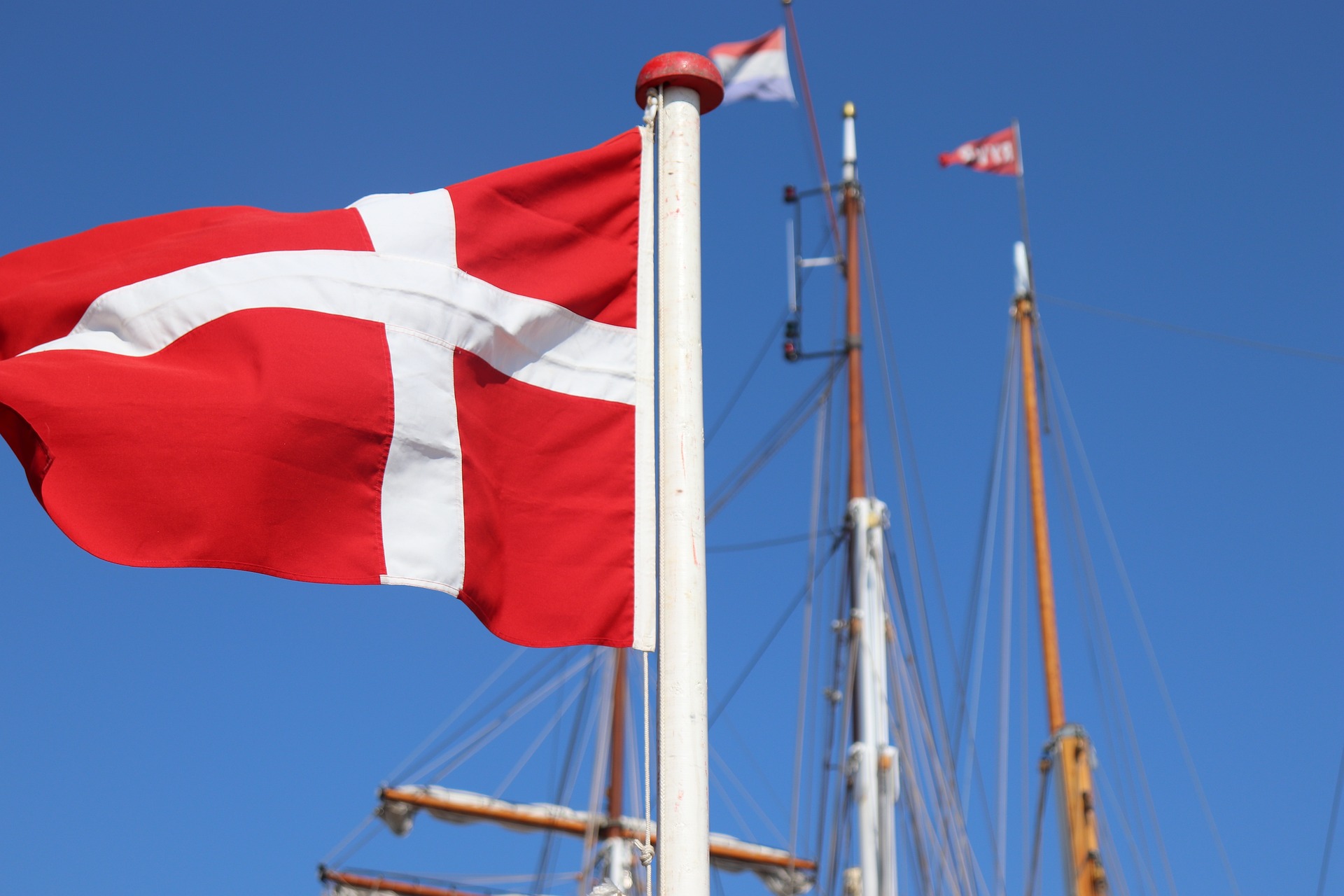
多言語 Web サイトの重要性はどれだけ強調してもしすぎることはありません。 世界的な市場が飛躍的に拡大する中、企業も個人も同様に、母国語で視聴者にリーチすることの計り知れないメリットを認識しています。
多言語 Web サイトの作成において重要な関連性を持つ言語の 1 つはデンマーク語です。
多言語ウェブサイトとデンマーク語への翻訳の紹介
北ゲルマン語のデンマーク語は、世界中で約 600 万人が話しています。 主にデンマークで使用されていますが、フェロー諸島やグリーンランドでも公式の地位を占めており、これらの地域の視聴者と関わりたいと考えている人々にとって重要な言語となっています。
デンマーク語には豊かな歴史があり、その起源はバイキング時代にまで遡ります。 何世紀にもわたって、それは独特の音韻、語彙、文法を特徴とする独特の言語実体に進化してきました。デンマーク語は、その複雑な母音と屈折形態により、非ネイティブスピーカーにとってはいくつかの困難を引き起こす可能性がありますが、比較的単純な構文と文法により、学習しやすい言語となっています。
デンマーク語圏の市場への参入を検討している企業や個人にとって、デンマーク語でローカライズされた Web サイトを持つことは不可欠です。 これは、デンマーク語を話す視聴者にサービスを提供するという取り組みを示すだけでなく、ユーザー エクスペリエンスを向上させ、信頼と信用を促進します。
さらに、インターネット上でデンマーク語のコンテンツが普及しているため、Web サイトのデンマーク語版を用意することで、オンラインでのリーチを大幅に拡大できます。 多国籍企業であっても、国際的な拡大を目指す中小企業であっても、WordPress サイトをデンマーク語に翻訳することで、成長と成功の機会が広がります。
この記事では、WordPress サイトをデンマーク語に翻訳するプロセスについて説明し、その過程での利点と課題に焦点を当てます。 また、強力なツールである Autoglot WordPress 翻訳プラグインも紹介します。これは、翻訳プロセスを自動化し、ウェブサイトがデンマークの視聴者に効果的に伝わるようにするためのシームレスなソリューションを提供します。それでは、デンマーク語翻訳の世界を詳しく掘り下げ、デンマーク語圏市場で WordPress サイトの可能性を最大限に引き出す方法を見つけてみましょう。
デンマーク語
デンマーク語はゲルマン諸語の北ゲルマン語派に属し、対応する言語の中で独特の地位を占めています。 スカンジナビアの歴史に深く根ざしたルーツを持つデンマーク語は、何世紀にもわたって独特で魅力的な言語へと進化してきました。

デンマーク語の歴史
デンマーク語の歴史は、8世紀から11世紀頃のヴァイキング時代にまで遡ることができます。 この時代、デンマーク語、ノルウェー語、スウェーデン語を含む現在のスカンジナビア言語の先駆けである古ノルド語が北欧地域全体で話されていました。北欧人入植者が地域全体に広がるにつれて、彼らの言語は徐々に進化し、現在私たちがデンマーク語として認識しているものになりました。
中世を通じて、デンマーク語は近隣の言語や方言との接触の影響を受けて大きな変化を遂げました。 キリスト教の導入とラテン文字の採用により言語はさらに形成され、中期デンマーク語の発展につながりました。
16 世紀までに、デンマーク語はデンマークとその領土の行政、文学、文化の主要言語としての地位を確立しました。この時期のデンマーク語のスペルと文法の標準化により、今日私たちが知っている現代デンマーク語の基礎が築かれました。
デンマーク語の構造、語彙、文法
デンマーク語は、他のスカンジナビア言語と同様、他の多くのヨーロッパ言語と比較して比較的単純な文法構造を示します。 ほとんどの文では主語、動詞、目的語の語順に従い、数と明確さのために名詞が語形変化します。
- デンマーク語の最も特徴的な特徴の 1 つは、幅広い母音と独特の stød または声門閉鎖音を特徴とする発音です。これらの音声特徴により、デンマーク語に旋律的でリズミカルな特質が与えられ、他のゲルマン系言語と区別されます。
- デンマーク語の語彙は、古ノルド語、低地ドイツ語、ラテン語など、さまざまな情報源に由来しています。英語や他のゲルマン系言語の話者にとっては、多くの単語が馴染みのないものに見えるかもしれませんが、デンマーク語学習者は、語彙の習得を容易にする共通点や同源語を見つけることがよくあります。
- デンマーク語の文法は比較的単純で、ドイツ語やラテン語などの言語と比べて語尾の屈折がほとんどありません。デンマーク語の名詞は数と明確さのために活用され、動詞は時制と気分のために活用されます。定冠詞と不定冠詞の使用もデンマーク語文法の顕著な特徴であり、語順と文構造に影響を与えます。
全体として、デンマーク語は学習者にとっていくつかの課題を突きつけるかもしれませんが、その豊かな歴史、独特の音韻論、そして単純な文法により、学習し習得するのに興味深く、やりがいのある言語となっています。文化遺産、文学の伝統、あるいは現代との関連性のいずれに魅力を感じても、デンマーク語は探究され、受け入れられるのを待っている言語のタペストリーを提供します。
デンマーク語を話す人々
デンマーク語は、そのルーツがスカンジナビアの歴史に深く根付いており、言語媒体としてだけでなく、世界中の何百万もの人々にとって文化的な識別子としても重要です。 デンマーク語を話す人口統計を理解すると、さまざまな地域やコミュニティにわたるデンマーク語の到達範囲と影響について貴重な洞察が得られます。

デンマーク語を話す人口
デンマーク語は主にデンマークで話されており、国の公用語として使用されています。 人口約 600 万人のデンマークは、活気に満ちた言語環境を誇り、公式および非公式の両方の場面でデンマーク語が主要なコミュニケーション手段として機能しています。
デンマークに加えて、デンマーク語を話すコミュニティはフェロー諸島とグリーンランドにもあり、どちらもデンマーク王国内の自治領です。 これらの地域には独自の文化的アイデンティティがありますが、デンマーク語は依然として政府、教育、商業に不可欠な言語です。
デンマーク語圏の国
デンマーク語が話されている主な地域はデンマーク、フェロー諸島、グリーンランドですが、この言語は世界の他の地域でも関連性があります。 歴史的なつながりと移住パターンにより、デンマーク語を話すコミュニティは、米国、カナダ、スウェーデン、ノルウェーなどの国々で見られます。
デンマーク語が公用語である国
デンマークの他に、フェロー諸島とグリーンランドでもデンマーク語が公的な地位を占めており、政府の議事、教育、メディアでデンマーク語が使用されています。 これらの地域はデンマークとの強いつながりを維持しながら、独自の文化的アイデンティティを維持しており、デンマーク語を言語遺産の不可欠な部分にしています。
デンマーク語を話す国
デンマーク語が公的な地位を占めている地域に加えて、デンマーク語を話すコミュニティが世界中のさまざまな国で見つかります。 歴史的な移住、文化交流、経済的機会などの理由により、デンマーク語を話す人々は、米国、カナダ、オーストラリア、英国などの国々で活気のあるコミュニティを確立してきました。
全体として、デンマーク語は主にデンマークを連想するかもしれませんが、その影響は国境をはるかに超えています。自治区から離散コミュニティに至るまで、デンマーク語を話す人々は言語と文化の世界的な多様性に貢献し、独自の視点と伝統で世界を豊かにしています。
そのため、デンマーク語を話す人々の人口統計を理解することで、この魅力的な言語の世界的な広がりと重要性が明らかになります。
インターネット上のデンマーク語: デンマーク語はどの程度普及していますか?
ますます相互接続が進む世界において、インターネットはグローバルなコミュニケーション、商取引、文化へのゲートウェイとして機能します。 したがって、インターネット上にさまざまな言語が存在することは、人間の表現の多様性と豊かさを反映しています。デンマーク語は、独自の言語遺産と文化的重要性を持ち、デジタル環境を形成し、世界中のデンマーク語を話すコミュニティを結び付ける上で重要な役割を果たしています。

デンマーク語はインターネット上でどの程度普及しているか
デンマーク語は、インターネット上では他の言語ほど広く話されていないかもしれませんが、それでもデジタル領域では重要な存在感を維持しています。 デンマークの視聴者を対象とした Web サイトは、ニュース、エンターテイメント、電子商取引、教育など、幅広いトピックをカバーしています。デンマーク人のユーザーは母国語でオンライン コンテンツを利用し、デンマーク語での情報、エンターテイメント、社会的交流を求めています。
さらに、デンマーク政府とさまざまな組織は、デンマーク語のデジタル リテラシーとオンライン サービスを積極的に推進し、デンマーク語を話す人がオンラインで重要なリソースや情報にアクセスできるようにしています。 政府の公式 Web サイトから教育プラットフォーム、ソーシャル メディア ネットワークに至るまで、デンマーク語のコンテンツは、母国語でオンラインの世界に参加したいと考えている人にとってすぐに利用できます。
ウェブサイトのデンマーク語版を用意することが重要な理由
デンマーク語を話すユーザーにリーチしたい企業や個人にとって、ウェブサイトのデンマーク語版を持つことは不可欠です。 これは、デンマークのユーザーにサービスを提供するという取り組みを示すだけでなく、ユーザー エクスペリエンスを向上させ、ユーザーの好みの言語でのコミュニケーションを促進します。デンマーク語でコンテンツを提供することで、Web サイト所有者はデンマークの視聴者と効果的に関わり、信頼と信用を築き、最終的にはトラフィックとコンバージョンを促進することができます。
さらに、Web サイトのデンマーク語版を作成すると、デンマーク語圏市場での認知度や関連性が向上します。 検索エンジンはローカライズされたコンテンツを優先します。つまり、デンマーク語の Web サイトがデンマーク語のクエリの検索結果に表示される可能性が高くなります。これにより、オンラインでの認知度が大幅に向上し、デンマーク語で製品、サービス、情報を積極的に探しているデンマークのユーザーを引き付けることができます。
インターネット上でのデンマーク語の存在は、オンラインでデンマーク語を話す視聴者に応えることの重要性を強調しています。デンマーク市場への進出を検討している企業であっても、デンマークのコミュニティとのつながりを求めている個人であっても、ウェブサイトのデンマーク語版を持つことは、デジタル時代で成功するために非常に重要です。
オンラインでデンマーク語と文化を取り入れることで、デンマーク語を話す活気に満ちたダイナミックなコミュニティを活用し、成長と交流のための新たな機会を開くことができます。
WordPress サイトをデンマーク語に翻訳する方法
WordPress サイトをデンマーク語に翻訳すると、デンマーク語を話す視聴者にリーチし、オンラインでの存在感を拡大する可能性が広がります。 デンマーク市場への参入を検討している企業であっても、デンマークの読者とのつながりを求めている個人ブロガーであっても、コンテンツをデンマーク語で提供することで、ユーザー エクスペリエンスとエンゲージメントを大幅に向上させることができます。
ここでは、WordPress サイトをデンマーク語に翻訳する主な方法をいくつか紹介し、翻訳プロセスを自動化する強力なツールとして Autoglot WordPress 翻訳プラグインを紹介します。
- 手動翻訳。 WordPress サイトをデンマーク語に翻訳する従来のアプローチの 1 つは、手動翻訳によるものです。これには、プロの翻訳者を雇うか、自分で翻訳作業を行い、Web サイトの各ページ、投稿、要素を手動でデンマーク語に翻訳する必要があります。手動翻訳は正確さと品質を保証しますが、特に広範なコンテンツを含む大規模な Web サイトの場合、時間とリソースが大量に消費される可能性があります。
- 翻訳プラグインの使用。 WordPress サイトをデンマーク語に翻訳するもう 1 つのオプションは、翻訳プラグインを使用することです。 WordPress は、Web サイトのコンテンツをデンマーク語を含む複数の言語に翻訳できるさまざまな翻訳プラグインを提供しています。これらのプラグインは通常、翻訳を管理するための使いやすいインターフェイスを提供し、Web サイトのページ、投稿、メニュー、その他の要素を簡単に翻訳できるようにします。
- Autoglot WordPress 翻訳プラグイン。翻訳プラグインの中でも傑出したオプションの 1 つは、Autoglot WordPress 翻訳プラグインです。 Autoglot は、WordPress サイトをデンマーク語やその他の言語に自動的に翻訳する独自のソリューションを提供し、手動翻訳や複数のプラグインの必要性を排除します。
なぜオートグロットなのか? Autoglot の主な利点
Autoglot は高度な機械翻訳テクノロジーを利用して、Web サイトのコンテンツを迅速かつ正確に翻訳します。 デンマーク語を含む 100 以上の言語をサポートする Autoglot は、ウェブサイトがデンマーク語の視聴者に効果的に伝わり、デンマーク語の微妙なニュアンスを捉えられるようにします。
さらに、Autoglot は WordPress サイトとシームレスに統合し、数回クリックするだけで Web サイト全体を翻訳できます。 プラグインは各ページの言語を自動的に検出し、元のコンテンツのレイアウトと書式を維持しながらデンマーク語に翻訳します。
Autoglot の機能を活用することで、Web サイトがデンマークの視聴者の共感を呼ぶようにしながら、翻訳作業にかかる時間とリソースを節約できます。 小規模なブログを翻訳する場合でも、大規模な電子商取引サイトを翻訳する場合でも、Autoglot はデンマークのユーザーにリーチし、オンライン リーチを拡大するための信頼性が高く効率的なソリューションを提供します。
WordPress サイトをデンマーク語に翻訳すると、デンマーク語圏市場での関与と成長の新たな機会が生まれます。手動翻訳、従来の翻訳プラグイン、または Autoglot のような革新的なソリューションを選択するかどうかに関係なく、デンマーク語翻訳に投資することで、デンマークの視聴者とつながり、信頼と信用を築き、最終的にはオンラインの目標を達成することができます。
WordPress サイトをデンマーク語に翻訳するためのステップバイステップガイド
WordPress サイトをデンマーク語に翻訳するのは、特に Autoglot などの翻訳プラグインを使用すると簡単なプロセスです。 このステップバイステップのガイドでは、インストールから自動翻訳の結果の確認まで、Autoglot を使用して WordPress サイトをデンマーク語に翻訳するプロセスを説明します。
ステップ 1. プラグインのインストールとアクティブ化。
- 最初のステップは、Web サイトに Autoglot WordPress 翻訳プラグインをインストールしてアクティブ化することです。
- これを行うには、WordPress ダッシュボードの「プラグイン」セクションに移動し、「新規追加」をクリックして「Autoglot」を検索します。
- プラグインを見つけたら、「今すぐインストール」をクリックし、「アクティブ化」をクリックしてサイト上でプラグインをアクティブ化します。
公式 WordPress プラグイン リポジトリから Autoglot を直接ダウンロードすることもできます。
ソース
ステップ 2. Autoglot コントロール パネルへの登録
- Autoglot プラグインをアクティブ化した後、Autoglot コントロール パネルでアカウントを登録する必要があります。
- これを行うには、WordPress ダッシュボードの「Autoglot」メニューをクリックし、「セットアップ」を選択します。
- そこから、「登録」リンクをクリックし、画面の指示に従ってアカウントを登録します。
Autoglot コントロール パネルを使用すると、翻訳費用を管理し、使用量を追跡し、新しい翻訳パッケージを注文できます。
ソース
ステップ 3. プラグインの設定
- アカウントに登録したら、Web サイトをデンマーク語に翻訳するために Autoglot プラグイン設定を構成する必要があります。
- Autoglot 設定で、「設定」タブに移動し、Autoglot コントロール パネルから無料の API キーを入力します。
- 言語スイッチャー、フラグ設定など、他の設定をカスタマイズすることもできます。
ステップ 4. 言語の中からデンマーク語を選択する
- プラグイン設定を構成した後、翻訳対象言語としてデンマーク語を選択して翻訳プロセスを開始できます。
- 翻訳したいページまたは投稿に移動するだけで、Autoglot を使用してデンマーク語に翻訳されたコンテンツが表示されます。
ステップ6. 自動翻訳結果を確認する
- 翻訳プロセスが完了したら、結果をレビューして正確さと品質を確認することが重要です。
- Autoglot は正確な翻訳を提供しますが、翻訳されたコンテンツにエラーや矛盾がないか再確認することを常にお勧めします。
- これを行うには、Web サイト上の翻訳されたページまたは投稿を確認し、必要な修正を加えます。
これらの簡単な手順に従うことで、Autoglot WordPress 翻訳プラグインを使用して、WordPress サイトをデンマーク語に迅速かつ効率的に翻訳できます。 デンマークの視聴者にリーチしたいと考えている企業であっても、デンマークの読者とのつながりを求めている個人のブロガーであっても、Autoglot は Web サイトをデンマーク語に翻訳し、オンラインでのリーチを拡大するための信頼性の高いユーザーフレンドリーなソリューションを提供します。
結論: WordPress サイトをデンマーク語に翻訳する際の課題と利点
WordPress サイトをデンマーク語に翻訳すると、オンラインでのリーチの拡大から、ユーザー エクスペリエンスやデンマーク語を話す視聴者とのエンゲージメントの強化まで、多くのメリットが得られます。 この記事では、オンラインでデンマーク人の視聴者に応えることの重要性を検討し、世界中のデンマーク語を話す人口統計についての洞察を提供しました。
これは、インターネットにおけるデンマーク語の重要性と、デンマークのユーザーとつながり、オンラインでの目標を達成するために、Web サイトのデンマーク語版が不可欠である理由も浮き彫りにしました。 デンマーク市場への参入を検討している企業であっても、デンマークのコミュニティとのつながりを求めている個人であっても、WordPress サイトをデンマーク語に翻訳することは、認知度、信頼性、エンゲージメントの点で大きな利益をもたらす可能性のある戦略的な動きです。
翻訳プロセスを自動化し、Web サイトのコンテンツをデンマーク語に正確かつ効率的に翻訳するための強力なツールとして、Autoglot WordPress 翻訳プラグインをお勧めします。
Autoglot を使用すると、WordPress サイトをデンマーク語にシームレスに翻訳し、デンマーク人だけでなく世界中のユーザーに簡単にリーチできるため、翻訳作業にかかる時間とリソースを節約できます。
ソース
この記事で提供されているステップバイステップのガイドに従うことで、WordPress サイトを迅速かつ効果的にデンマーク語に翻訳し、デンマーク語圏市場での成長と成功のための新たな機会を開くことができます。 小規模なブログを翻訳する場合でも、大規模な電子商取引サイトを翻訳する場合でも、Autoglot はデンマークのユーザーにリーチし、オンライン リーチを拡大するための信頼性が高く効率的なソリューションを提供します。
結論として、WordPress サイトをデンマーク語に翻訳することは、可視性、エンゲージメント、コンバージョン率の向上という点で報われる戦略的投資です。 オンラインでデンマークの言語と文化を取り入れることで、デンマークの視聴者とつながり、信頼と信用を築き、最終的にはオンラインでの目標を達成することができます。では、なぜ待つのでしょうか?今すぐデンマークのユーザーにリーチするための第一歩を踏み出し、Autoglot でデンマーク語圏市場での成功の旅に乗り出しましょう。



